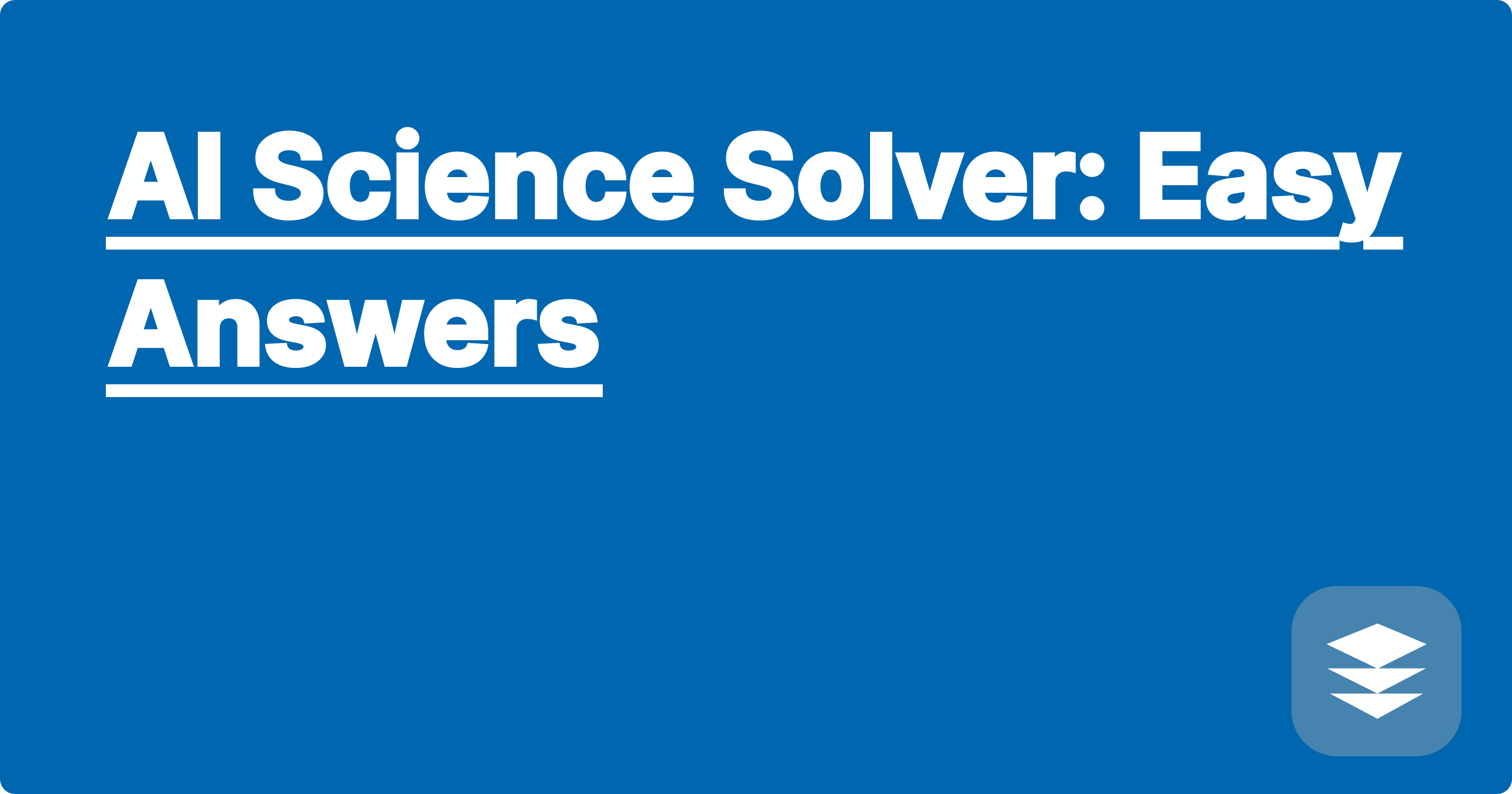
STEM fields present a constant barrage of complex problems, from intricate mathematical equations to deciphering complex biological processes. These challenges can be daunting, requiring significant time and effort to overcome. Artificial intelligence (AI) offers a powerful new set of tools that can significantly streamline the problem-solving process, providing efficient solutions and deeper insights. AI can assist with everything from automating repetitive tasks to generating novel hypotheses, thus accelerating scientific discovery.
This emerging landscape of AI-powered tools is particularly relevant for STEM students and researchers. These tools offer a unique opportunity to enhance learning, improve research efficiency, and gain a competitive edge in their respective fields. By understanding how to effectively leverage AI, students can strengthen their problem-solving skills and develop a deeper understanding of complex concepts. Researchers can accelerate their work, explore new avenues of inquiry, and contribute more effectively to the advancement of scientific knowledge. Embracing AI is no longer optional, but rather a necessary step for anyone seeking to excel in the rapidly evolving world of STEM.
Many STEM problems involve intricate calculations, data analysis, and the interpretation of complex scientific literature. For example, solving differential equations, a cornerstone of physics and engineering, can be incredibly time-consuming and error-prone. Similarly, analyzing large datasets in fields like genomics or astronomy requires specialized programming skills and computational resources. Even seemingly straightforward tasks, like literature reviews, can become overwhelming given the sheer volume of published research. These challenges can hinder progress, leading to frustration and a sense of being overwhelmed. Furthermore, traditional methods of problem-solving often rely on linear, step-by-step approaches, which can be inefficient when dealing with complex, multi-faceted problems.
AI tools offer a transformative approach to tackling these challenges. Large language models like ChatGPT and Claude can assist with understanding complex concepts, generating code for data analysis, and even drafting sections of research papers. Wolfram Alpha, a computational knowledge engine, excels at performing complex calculations, symbolic manipulations, and providing step-by-step solutions to mathematical problems. These tools can automate tedious tasks, freeing up time for more creative and strategic thinking. They can also provide alternative perspectives and solutions that might not be immediately apparent using traditional methods. By integrating these AI tools into their workflow, STEM students and researchers can significantly enhance their problem-solving capabilities.
Let's consider the example of solving a second-order differential equation. First, clearly define the equation and any associated boundary conditions. Next, input this information into a tool like Wolfram Alpha, using its natural language processing capabilities. The AI engine will then process the input, identify the type of equation, and apply the appropriate mathematical techniques to solve it. The solution will be presented in a clear and concise manner, often including both symbolic and numerical representations. For more complex problems, you might use ChatGPT or Claude to generate Python code using libraries like NumPy and SciPy. You would then input the equation and parameters into the generated code and execute it to obtain the solution. Finally, it's crucial to critically evaluate the results obtained from any AI tool, comparing them to existing knowledge and verifying their accuracy.
Consider the differential equation y'' + 4y = 0 with initial conditions y(0) = 1 and y'(0) = 0. Inputting this into Wolfram Alpha yields the solution y(x) = cos(2x). Another example is calculating the integral of x^2 * e^x from 0 to 1. Wolfram Alpha can provide both the exact solution (e - 2) and a numerical approximation. In genomics research, AI tools can be used to analyze gene expression data, identify potential drug targets, and predict the efficacy of treatments. ChatGPT can assist in writing Python code to process and visualize these datasets, while Wolfram Alpha can perform statistical analysis to identify significant patterns. These are just a few examples of how AI can be applied across diverse STEM fields.
To effectively integrate AI into your academic workflow, it's essential to develop a strong understanding of the underlying principles and limitations of these tools. Don't treat AI as a black box; instead, strive to understand how it arrives at its solutions. This will help you critically evaluate the results and avoid potential pitfalls. Furthermore, it's crucial to use AI ethically and responsibly, acknowledging its limitations and avoiding plagiarism. AI should be used as a tool to augment your own abilities, not as a replacement for critical thinking and original work. Always cite AI tools appropriately and transparently disclose their use in your research. By following these guidelines, you can leverage the power of AI to enhance your academic performance and contribute meaningfully to the scientific community.
Finally, remember that the landscape of AI is constantly evolving. Stay updated on the latest advancements and explore new tools as they emerge. Practice using different AI platforms and experiment with various problem-solving strategies. By embracing a proactive and adaptable approach, you can harness the full potential of AI to unlock new possibilities in your STEM journey. Continuously learning and experimenting will be key to maximizing the benefits of these powerful tools.
Conquer STEM: AI Practice Tests
AI Math Solver: Instant Solutions
AI Lab Assistant: Automate Tasks
Smart STEM Learning: AI-Powered
AI Science Solver: Easy Answers
Pass STEM Exams: AI-Powered Guide